| Feed budgeting in the dry period
is inherently difficult due to
the variability of the quality
of dry feed and the value of the
subsequent portion that the
sheep choose to eat. The
decline rate and pasture height
differences between different
pasture systems also affect the
amount of energy sheep can gain
from dry pasture. There are,
however, some 'rules of
thumb' that can be
used as a guide for
supplementary feeding in the dry
period. The general steps for
feed budgeting at any time
of the year are;
1.
What they can eat - What
they require = surplus or
deficit of
energy
2.
If they aren't getting
enough energy then how much
to feed to meet the
requirement.
It is important to remember
too, that the energy
requirements of sheep vary
with the feed they are
eating, the amount of
grazing they are doing to
find the feed and their
current status of nutrition
and whether they are dry,
pregnant or lactating.
The tables presented below
are general values
only. It is important
that these are used only as
a guide and that regular
condition scoring of the
flock is the best way to
tell if the feeding rates
are adequate for their
needs. These tables can also
be printed
out or saved as a
PDF file.
Step 1. What they Need
Using either Table 1a. or 1b.
select the column for the
frame size and row for the
pregnancy status of the
flock, finding the value for
maintenance energy required
in MJ/day.
These values will vary
slightly depending on the
quality and quantity of feed
the ewes are eating as well
as the weather conditions
and terrain of the paddock.
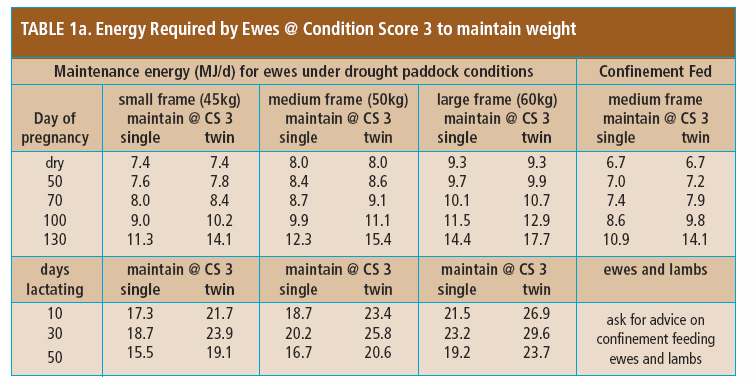
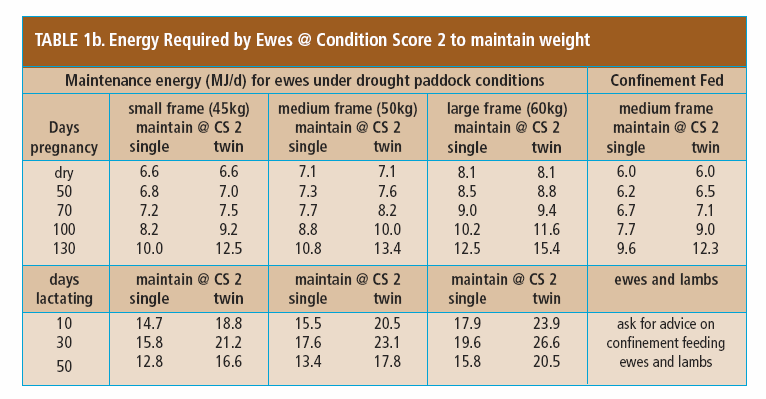
Example: medium frame ewes at
condition score 3 with twins
at day 100 of pregnancy need
approximately 11.1 MJ/day to
maintain their condition.
Step 2. What
they can eat
Using
Table 2 to identify the
estimated metabolisable
energy (ME) intake from dry
paddock feed. Use
Table 2a for
perennial-annual
mixed pastures and
Table 2b for annual sub
clover pasture
systems. These vary
due to the different height
and quality characteristics
of different pasture
types. Weather also
affects digestibility and
therefore quality and is
very variable throughout the
season, so use this only as
a guide. Sheep will
also preferentially graze
the higher quality fraction
of the pasture first, which
may cause higher intakes
than expected at first.
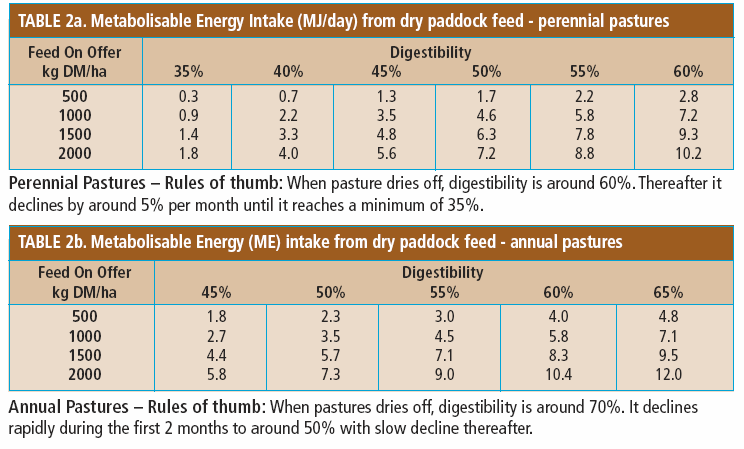
Example: The ewes in
step 1. are grazing pastures
of 1500 FOO of dry 50%
digestible pasture
that has a mix of
perennial grass and some
clover. This means
they can eat
approximately 6.3
MJ/day.
Step 3. Losing or Gaining
Weight?
This is calculated by
subtracting the results of
Step 1 from the results of
Step 2, that is, what they
can eat minus what they
need. This is then either a
surplus and ewes will
increase in condition,
or a deficit and ewes will
lose condition. Table 3
shows the deficit or surplus
in terms of grams per
head per day and in change
in condition score in 30
days for each frame size.
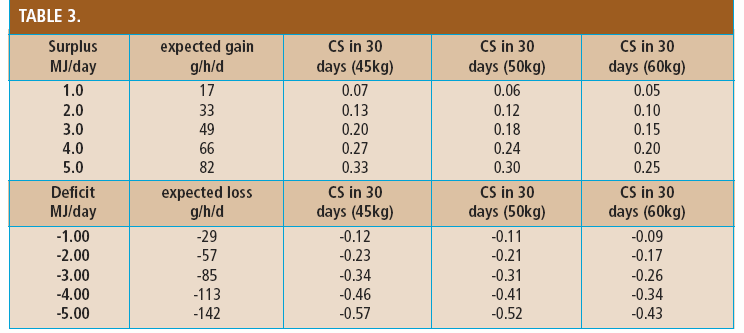
Example: The ewes from
Step 1 (need 11.1MJ/d) and
Step 2 (can eat 6.3
MJ/d) have a deficit
of 4.6 MJ/d (11.1
- 6.3 MJ). This
means the ewes will be
losing about 140gms
per head per day or half a
condition score over the 30
days.
Step 4 How much
to feed?
Use the Table below
(from 'Managing Sheep in Dry
Times' Bulletin, DAFWA) to
obtain an estimate of the
energy value of the feed
expected to be fed. We
suggest that feeds are
tested as they can
be variable, especially
hays and
silages.
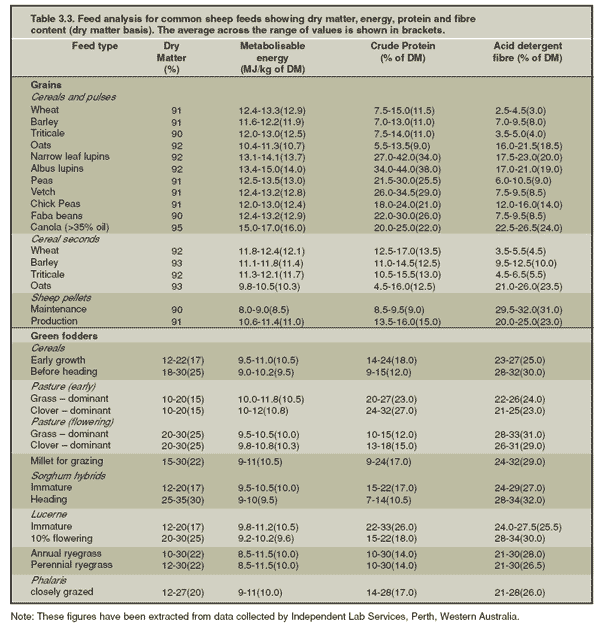
Step 5: Determine how much
feed to offer
Once a target condition for
the ewe flock and how much
energy is required to meet
that target been decided,
and the energy value of the
feedstuff determined you
need to calculate how much
feed to offer.
Ewes in energy deficit:
Divide the deficit (MJ/day)
by the energy value of the
feed (MJ/kg). This
gives the number of
kilograms per day to be fed.
In our example the ewes need
4.6MJ/d. Using barley
at 13MJ/kg they require
4.6/13 = 0.35kg of barley
These figures are expressed
in dry matter per kilogram
so it is important to
convert the amount to 'as
fed' kilograms which takes
into account the moisture
content of the feed.
To do this;
Divide the kg/head/day
to be fed by the dry matter
% from Table 4. This
is the weight to be fed out
in the paddock.
For example,
barley at 90% Dry Matter and
0.35kg/hd/d
required:
0.35kg / 0.90 =
0.39kg to be fed.
Back to
Top
|